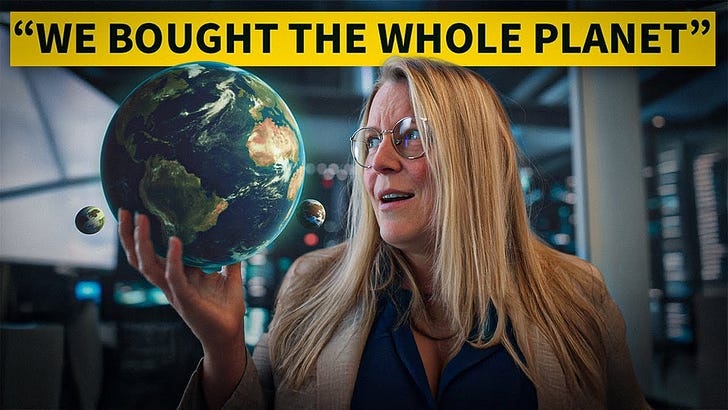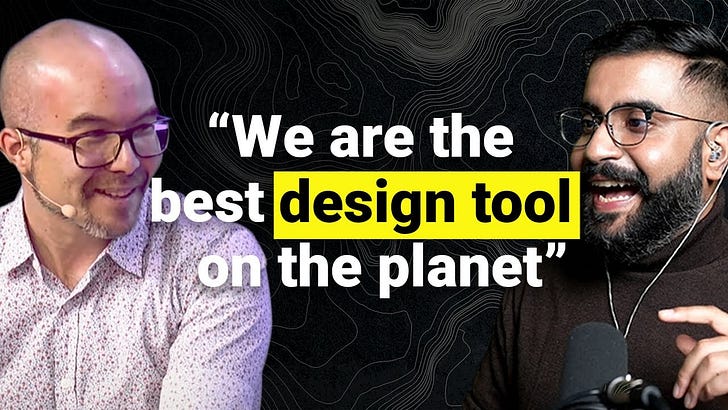The Untold Story of Google Earth
Description
Just launched my 33-min documentary: "The Untold Story of Google Earth."
The origin story is wilder and more impactful than most people realize. From $800/year enterprise software to a free tool that saved 4,000 lives during Hurricane Katrina, reunited lost families, and discovered entirely new ecosystems.
After two decades of breakthroughs in photogrammetry, street view, and satellite imagery, Google Earth is now evolving again. Generative AI is turning this digital twin into a planetary prediction engine — a virtual crystal ball.
I had the privilege of interviewing Rebecca Moore (Former Director) and Matt Hancher (Director of Engineering) to uncover the full 20-year journey.
Full Transcript: Video Essay + Interviews
Google Earth just turned 20, but few people know the origin story.
March 2003, a war begins. And for the first time in history, millions watch it unfold on a 3D globe, zooming into Baghdad on live television. Maps had never moved like this before.
Rebecca Moore: It was kind of stunning. It was fantastic. And second hand, I heard later from the Keyhole team that their servers almost crashed.
CNN saw revolutionary reporting, but the founders of Google saw the future of search itself. Not 10 blue links, but a living, breathing planet you could browse just like the internet. Two years later, Google put the entire world on our screens for free. Suddenly, this tech went from war rooms to living rooms. Anyone could fly from space to their streets in seconds.
Rebecca Moore: I opened it up and I was like, "Oh my God, this is the answer."
We thought we were building the ultimate map. Turns out we built a mirror instead. After four years inside Google's Geo team, I've watched this mirror evolve into something else entirely. We're not just mapping the world anymore, we're mapping ourselves. This is the 20-year journey of Google Earth and how this mirror is turning into a crystal ball.
Chapter 1: Sci-fi Spy Tech → Gift to the World
The idea came from science fiction. In Neal Stephenson's Snow Crash, the protagonist uses a software program called Earth, a perfectly detailed rendition of planet Earth. What was fiction in 1992 became Keyhole EarthViewer in 2001.
Matt Hancher: The intelligence agencies of the world had had access to versions of this kind of technology for a long time. That's where the original capability, of course, for imaging the Earth from space had come from. But even those tools, they were designed for professionals, they were a little cumbersome. This was really the first time, even for them, that anyone with no special training could walk up to a computer, pick any place in the world, fly there, and see what it looks like and understand what's happening there, understand how it's been changing.
Rebecca Moore: It has all the satellite imagery, you can annotate it with your own data, it has all the roads. This is going to be the magic platform for us.
Keyhole was a revelation. News media and the intelligence community saw the potential immediately, but this glimpse of the future came with a hefty price tag.
Rebecca Moore: When I first experimented with Keyhole, it was $800 a year. At the start as Keyhole, it was a commercial product. They were a startup, they were selling it to the government and to real estate.
Bilawal Sidhu: Keyhole was bleeding money, burning through venture capital. They needed customers fast. But in Mountain View, the founders of a then four-year-old company called Google saw something bigger than breaking news and tools of war. They saw the future of search itself.
Rebecca Moore: Larry and Sergey had seen, Megan Smith had seen the CNN use of Earth. And at that time, they were already aware that a significant proportion of searches that people were doing on the web related to a geographic location. And they thought we should have a geo-browser that would let you search and explore information about the world in the context of a digital representation of the physical world. And that was the original idea for the acquisition, to create a geo-browser.
Bilawal Sidhu: Now with Google's resources behind them, the mission exploded in scope. This scrappy startup was about to get their first lesson in what Google scale truly meant.
Rebecca Moore: Brian McClendon and John Hanke were pitching to Larry and Sergey. At that time, Keyhole only had high-resolution imagery for the US. The rest of the world they did not. So Brian asked Larry, is it possible maybe if you acquire us, we could afford to get imagery for Europe? And Larry was like, "Well, how many square kilometers are there in the whole world?" Back of the envelope. "How much are you paying per square kilometer?" Back of the envelope. "Let's just do the whole world."
Bilawal Sidhu: Think bigger.
Rebecca Moore: Yes, that was like, think Google scale.
Bilawal Sidhu: And think bigger they did. In June 2005, Google Earth with perhaps the most extensive collection of geospatial imagery was released to the public for free, getting billions of downloads over the coming years. The first thing people did in Google Earth wasn't to go look at the pyramids or explore the Amazon, it was to zoom in and see the roof over their own head. But it didn't stop there. Earth quickly became a cultural phenomenon, both a tool and a toy. People weren't just using it to plan trips and check directions. They were hunting for mysteries, creating a crowdsourced catalog of oddities visible from space.
Matt Hancher: Occasionally when the satellite is taking a photograph, there will happen to be an airplane flying below at the exact same time. Incredible rare event that's fun to spot them.
Bilawal Sidhu: Some discoveries were quirky, like these rainbow-colored planes caught between satellite bands. But others changed lives forever.
Matt Hancher: One of the stories that is most powerful for me about how people can use Google Earth to make discoveries is a story that was powerful enough to others that they made a whole movie about it called Lion. This is about a boy who was separated in India from his family when he was a very young child, ultimately had a new life somewhere else, had always been curious about the family he left behind. And 25 years later, he learns about Google Earth and realizes that he can use these capabilities to go back and start to piece together, oh, here are landmarks that I recognize. He had to scour the entire country trying to piece together where he had come from and ultimately was able to reconnect with his biological mother in real life.
Bilawal Sidhu: Stories like Saroo showed the power of connecting personal memories to the map. But what if you could add your own data, your own stories directly on the globe for anyone to see? Earth made that possible with a simple but revolutionary tool, KML, or Keyhole Markup Language, essentially turning the globe into a canvas for anyone to paint on.
Chapter 2: Katrina – First Real-World Test
Bilawal Sidhu: And then Hurricane Katrina happened, becoming the first real-world test of what you can do when you have a shared picture of the globe.
Rebecca Moore: My first week as a Googler was when Katrina hit. And the Google Earth team was turned upside down. Eric Schmidt came down my second day and he said to the team, "Whatever your OKRs were, whatever you were planning to work on, forget that. If you can save lives in this Katrina hurricane in New Orleans, that's what you should be focused on. And I'm really proud of you." He gave the team a pep talk. Because there were so many dynamic changes going on of flooding happening and levees bursting and people stuck on roofs of stadiums and it was completely chaotic. And this aerial imagery was like a gold mine of information for the first responders. Then the team created a parallel database of imagery that was for this New Orleans imagery that was coming in every hour. They set up in New Orleans an emergency response center, and they were all using Google Earth. They would enter in Google Earth 123 Smith Street, it would fly them there, they would see the imagery that was collected an hour ago. They would have situational awareness on, okay, where could a helicopter go and pick up their grandparents? And they would then call the lat/long from Google Earth to the helicopter. The Coast Guard called us and left a message that using Google Earth, they saved the lives of more than 4,000 people.
Bilawal Sidhu: For the first time, evacuees could see the state of their homes from hundreds of miles away. Rescue teams could spot down power lines and chart new paths. Vague pleas for help suddenly turned into precise coordinates for a helicopter pilot. The geo-browser built for planning vacations had suddenly become an indispensable lifeline.
Rebecca Moore: Now it became clear that it was a profound tool with humanitarian applications and environmental applications that no one had realized.
Bilawal Sidhu: Google Earth became a mainstay, with enterprise versions going on to power everything from the Department of Defense to NASA. Even President George Bush liked to use "the Google" to fly over his r







